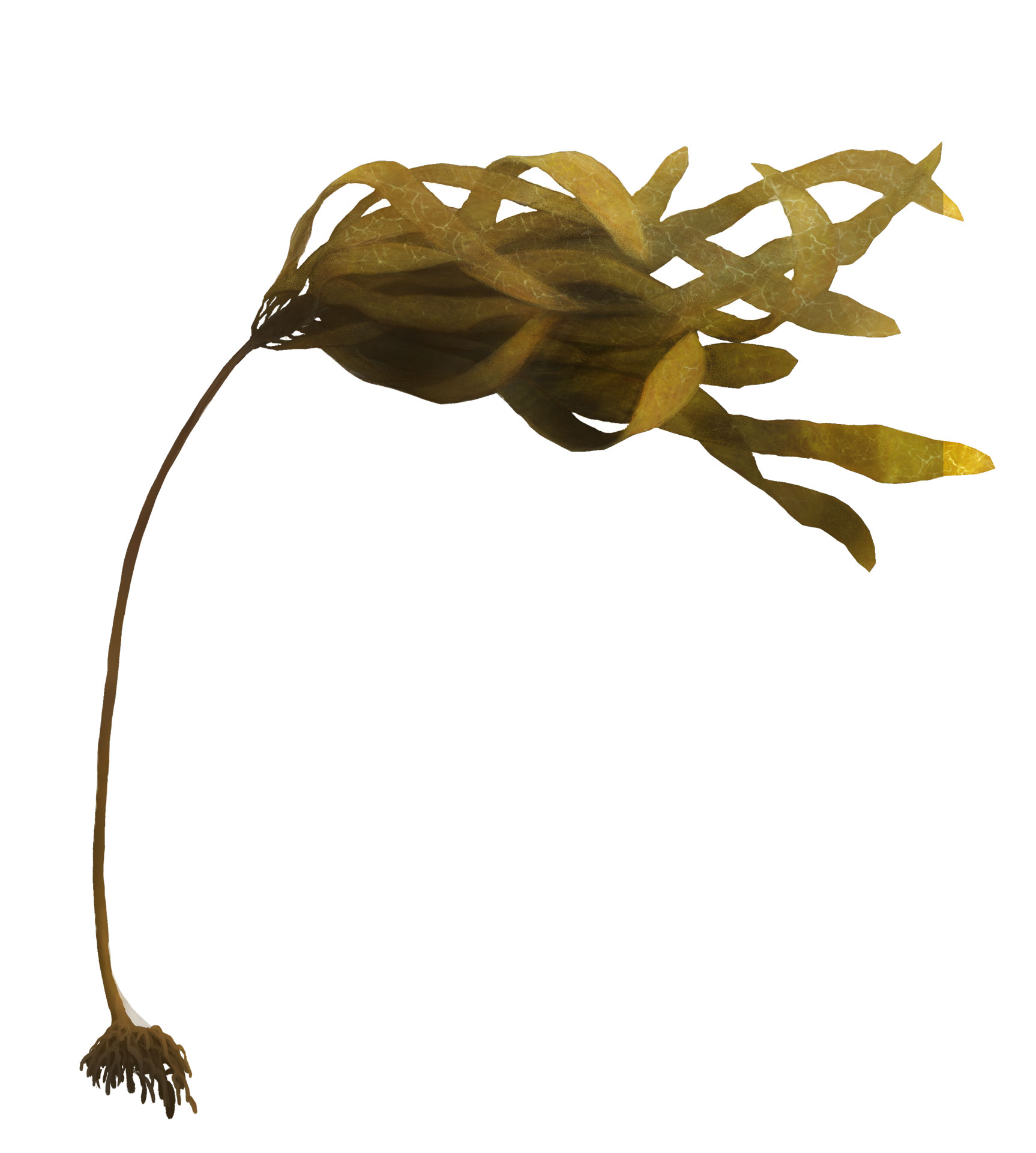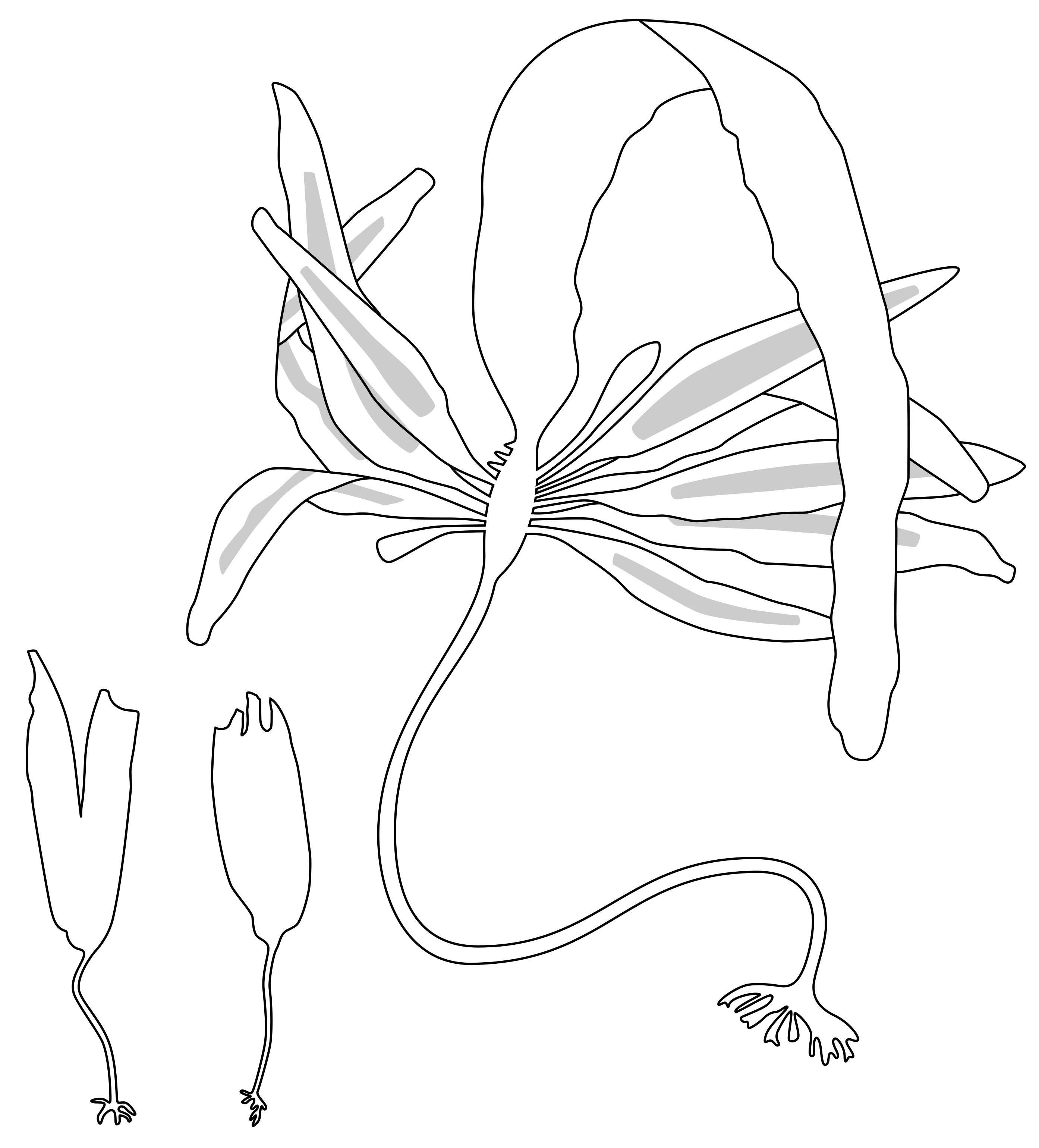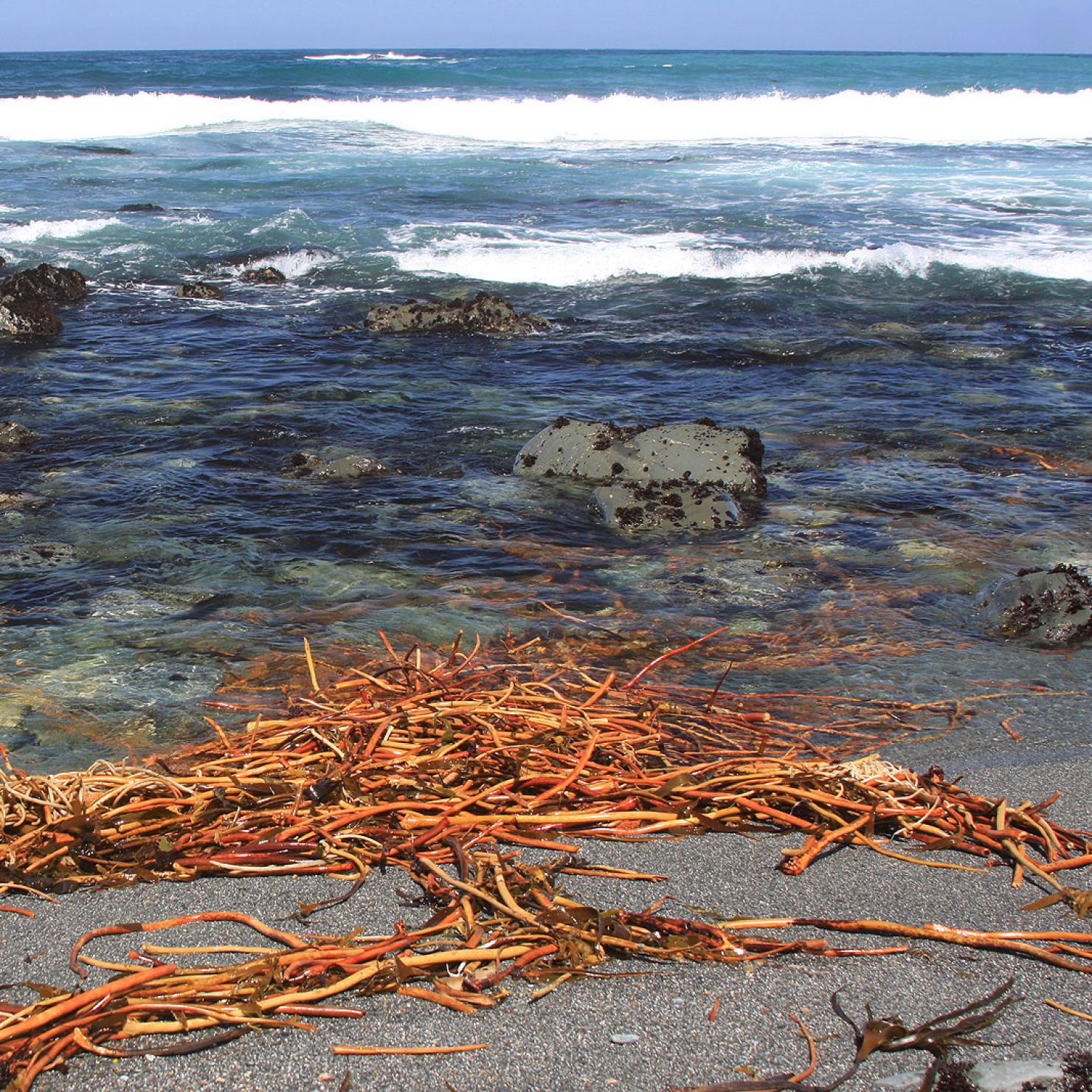Understory Kelp

Walking kelp
Pterygophora californica
(from Cook Inlet, Alaska to Baja California)
The Old Growth of the Ocean
Pterygophora californica is a perennial kelp that is as important to our kelp forest habitats as Nereocystis luetkeana (bull kelp) or Macrocystis pyrifera (giant kelp). When these larger foundational kelps are described and their failing health is discussed, Pterygophora rarely elicits a mention. Pterygophora along with other seaweeds and kelps, such as Desmarestia (acid weed), make up the understory of the kelp forests along the North Pacific Coast; it is the chaparral to the larger kelp’s redwoods. Its dark brown blades are thick and leathery and grow straight out horizontally from its stiff stipe, like wings. It does not turn up on aerial surveys of coastal kelp because it rarely reaches the ocean surface, but it is, in fact, the old growth forest of the seas. Pterygophora has a very stiff stipe, up to a meter tall—the stiffest among kelps—and is often referred to as stipitate or stalked kelp. This stipe grows as a cylinder from the holdfast but flattens up top where the main blade emerges and the wings or sporophyll blades jut out. When cut in cross section, the stipe reveals growth rings. In ideal conditions, this kelp can easily live for 15–20 years and some have been found to be 25 years old, a true anachronism in the algal realm; it is the oldest kelp in the underwater woods. It tends to grow in two zones, either the deeper kelp forest zone, or closer to shore in groves just beyond the low tide mark.

Pterygophora is a perennial and persists for many years, often in age-group clusters. Sori (spore patches) are produced on the sporophyll blades that jut out horizontally. Baby walking kelp can be found occasionally in the intertidal and like all kelp, they start as a single blade on a single stipe.
In many of the bull kelp forests of the California and Oregon Coast, hordes of urchins have swept through since the 2014–2016 ocean heatwave and sea star die-off, eating all the kelp it can find. On first pass the urchins eat the bull kelp and the Pterygophora blades, leaving the unbending Pterygophora stipes denuded, standing like upright walking sticks. Then on a second pass the starving urchins will graze down the woody stipes to nothing. While the bull kelp forest can be picked up on annual surveys and its decline tends to get the news, the loss of Pterygophora is equally alarming.

Pterygophora stipes as wrack often sport a vibrant orange color.
In the Pacific Northwest and in pockets along the central coast of British Columbia where the urchin-eating otter have rebounded, the Pterygophora is abundant. Stands of Pterygophora have been studied over the long term with dated tags, and it has been noted that whole groves will senesce, or age out, at the same time and wash ashore, creating great piles of their stipes, devoid of blades, drying along the wrack line. Easily mistaken for a stick or piece of driftwood, the stipe’s flattened end with corrugated, regularly-curved edges is the tell-tale sign that it is algal in origin. These hardened stipes make for fabulous nest building material for eagles and osprey.
Walking Kelp
Pterygophora has a few common names: winged or woody kelp are used, but the most poetic name, used by Indigenous people of the Pacific Northwest is “walking kelp.” Its holdfast can attach to a cobble or a stone heavy enough to keep the organism rooted to the ocean bottom, but as the kelp grows, vulnerable to wave action and surf, the cobbles, with their attached kelp, bounce in the surf creating the effect of “walking” around the shallower waters. First Nations peoples would use this mobility to their advantage by arranging the Pterygophora—with their weighted cobbles—into rows, creating a funnel to deflect salmon into fishing traps. Ingenious!
The walking kelp is an important algal component to the ecology of the sub-tidal realm, yet it seldom hits our human radar; its status as healthy or stricken generally goes unrecognized. One can only hope that its long-lived resilience can withstand the stressors humans are putting on its ocean home.




